#props vue js
Explore tagged Tumblr posts
Text
Ui Developer (React JS)
1) Must have skills. 5+ years of experience in JavaScript Development & Experinece in React/Angular/Vue, HTML5, CSS3 & SASSBoostrap/Material-UI/PrimeNG- Knowledge of React’s core concepts like JSX, components, props, state, and lifecycle methods. – Proficiency in other aspects of SPAs like routing(react-router), api integration(axios/fetch) etc. – Unit Testing for React through Jest, etc. while…
0 notes
Text
Ui Developer (React JS)
1) Must have skills. 5+ years of experience in JavaScript Development & Experinece in React/Angular/Vue, HTML5, CSS3 & SASSBoostrap/Material-UI/PrimeNG- Knowledge of React’s core concepts like JSX, components, props, state, and lifecycle methods. – Proficiency in other aspects of SPAs like routing(react-router), api integration(axios/fetch) etc. – Unit Testing for React through Jest, etc. while…
0 notes
Text
Top Software Certifications By Edchart
At Edchart, we pride ourselves on offering a diverse range of online software certifications tailored to meet the needs of professionals in the ever-evolving tech industry. Whether you are looking to enhance your skills or pursue a new career path, our comprehensive certification programs will provide you with the knowledge and credentials required to succeed.
React JS Certification
The React JS Certification is designed for developers who want to master this powerful JavaScript library for building user interfaces. Our course covers essential concepts, from creating components to managing state and props, ensuring you can build dynamic and responsive web applications.
ASP.NET Certification
The ASP.NET Certification program equips you with the skills to develop robust web applications using Microsoft's ASP.NET framework. Learn about MVC architecture, web APIs, and advanced features that make ASP.NET a preferred choice for enterprise-level applications.
Laravel Certification
Become a proficient PHP developer with our Laravel Certification. This course dives deep into the Laravel framework, covering everything from basic routing to advanced Eloquent ORM techniques, middleware, and package development.
MERN Stack Certification
The MERN Stack Certification offers a comprehensive learning path for mastering MongoDB, Express.js, React, and Node.js. This full-stack course ensures you are well-equipped to build modern, scalable web applications from scratch.
Android Developer Certification
Our Android Developer Certification program provides a complete guide to building, testing, and deploying Android applications. Gain hands-on experience with Android Studio, Java, Kotlin, and the latest Android development trends.
Node.js Certification
The Node.js Certification program is perfect for developers looking to leverage the power of JavaScript on the server side. Learn about asynchronous programming, RESTful APIs, and real-time applications with Node.js.
Django Certification
The Django Certification course offers in-depth knowledge of the Django framework, a high-level Python web framework that encourages rapid development and clean, pragmatic design. Master database integration, template rendering, and security features with Django.
Python Full Stack Developer Certification
Our Python Full Stack Developer Certification combines frontend and backend development skills using Python, ensuring you are ready to tackle any project. Learn Flask/Django for backend, HTML/CSS/JavaScript for frontend, and how to integrate them seamlessly.
PHP Certification
The PHP Certification program focuses on core PHP programming, object-oriented PHP, and PHP with MySQL. This course is ideal for aspiring web developers looking to gain a solid foundation in PHP development.
Ruby on Rails Certification
The Ruby on Rails Certification program equips you with the skills to develop dynamic web applications using the Ruby on Rails framework. Learn about MVC architecture, RESTful design, and deploying Rails applications.
.NET Certification Microsoft
The .NET Certification Microsoft program is designed to provide a thorough understanding of the .NET framework. Gain expertise in building, deploying, and managing applications on the .NET platform using C# and Visual Studio.
Best Certification for Python Developers
Our guide on the Best Certification for Python Developers helps you choose the right Python certification based on your career goals. From web development to data science, find the certification that aligns with your interests.
Vue JS Certification
The Vue JS Certification course covers the fundamentals of Vue.js, a progressive JavaScript framework for building user interfaces. Learn about components, directives, and single-file components to create interactive web applications.
MySQL Free Certification Course
Our MySQL Free Certification Course provides a solid introduction to MySQL, covering database design, SQL queries, and performance optimization. Perfect for beginners looking to get started with database management.
JavaScript Certification Free
The JavaScript Certification Free course offers a comprehensive overview of JavaScript programming. Learn about variables, functions, events, and DOM manipulation to enhance your web development skills.
Full Stack Developer Certification
The Full Stack Developer Certification program is designed to make you proficient in both frontend and backend technologies. Gain hands-on experience with HTML, CSS, JavaScript, React, Node.js, and databases like MongoDB.
WordPress Certification
Our WordPress Certification course covers everything from setting up a WordPress site to customizing themes and plugins. Ideal for anyone looking to build and manage professional websites using WordPress.
Ruby on Rails Certification for Professionals
The Ruby on Rails Certification for Professionals is tailored for experienced developers looking to deepen their knowledge of the Rails framework. Advanced topics include API development, performance optimization, and test-driven development.
Angular Certification
The Angular Certification program provides a thorough understanding of Angular, a platform for building mobile and desktop web applications. Learn about components, services, forms, and routing to create robust applications.
AngularJS Certification
The AngularJS Certification course focuses on the first version of Angular, helping you understand its core concepts and practical applications. Perfect for maintaining and upgrading legacy AngularJS applications.
AWS Machine Learning Certification
The AWS Machine Learning Certification program offers in-depth knowledge of machine learning concepts using Amazon Web Services. Learn about SageMaker, data engineering, and deploying machine learning models in the cloud.
Azure DevOps Certification
The Azure DevOps Certification course prepares you for managing DevOps practices using Microsoft's Azure platform. Gain expertise in continuous integration, delivery, and monitoring using Azure DevOps tools.
HTML CSS Certification
Our HTML CSS Certification program covers the essentials of web development, from basic HTML and CSS to advanced topics like responsive design and CSS frameworks. Perfect for beginners and aspiring web developers.
Software Testing Certification, Foundation Level
The Software Testing Certification, Foundation Level course provides a comprehensive introduction to software testing principles, techniques, and tools. Learn about test planning, execution, and defect management.
ITIL Certification Course
The ITIL Certification Course offers a thorough understanding of IT service management best practices. Learn about ITIL's core concepts, processes, and how to implement them effectively in your organization.
Oracle Java Certification Free
Our Oracle Java Certification Free course prepares you for the Oracle Certified Associate (OCA) Java SE Programmer exam. Learn about Java programming fundamentals, object-oriented concepts, and Java APIs.
Software Testing Professional Certification
The Software Testing Professional Certification program is designed for experienced testers looking to enhance their skills. Advanced topics include automation, performance testing, and test management.
ISTQB Agile Testing Certification
The ISTQB Agile Testing Certification, Agile Tester course covers agile testing methodologies, practices, and tools. Perfect for testers working in agile environments looking to align their skills with industry standards.
Azure Administrator Certification
The Azure Administrator Certification program equips you with the skills to manage Azure services, including computing, storage, and networking. Learn about deployment, monitoring, and maintenance of Azure resources.
Azure IoT Certification
The Azure IoT Certification course provides in-depth knowledge of Azure IoT solutions. Learn about device connectivity, data analytics, and how to implement IoT solutions using Azure services.
Azure Architect Certification
The Azure Architect Certification program prepares you to design and implement solutions on Microsoft Azure. Gain expertise in networking, security, storage, and compute resources to create scalable Azure solutions.
C Language Certificate
The C Language Certificate course offers a comprehensive introduction to the C programming language. Learn about data types, control structures, functions, and memory management to build efficient applications.
C++ Certification
Our C++ Free Certification provides a solid foundation in C++ programming. Covering basics to advanced topics, this course is ideal for aspiring software developers looking to master C++.
HR Certification
The HR Certification Courses Online Free program offers essential knowledge for HR professionals. Learn about recruitment, employee relations, compliance, and performance management in this comprehensive course.
Java Full Stack Certification
The Java Full Stack Certification program combines frontend and backend development using Java. Learn about Java programming, Spring framework, RESTful services, and frontend technologies to become a proficient full-stack developer.
React Native Certification
The React Native Certification course covers the essentials of building mobile applications using React Native. Learn about component-based architecture, navigation, and integrating native modules to create cross-platform apps.
Recruitment Specialist Certification
The Recruitment Specialist Certification program provides in-depth knowledge of recruitment processes and strategies. Learn about sourcing, interviewing, and onboarding best practices to become an effective recruiter.
Symfony Certification
The Symfony Certification course offers a thorough understanding of the Symfony PHP framework. Learn about bundles, services, routing, and security to build robust and scalable web applications.
Selenium Certification
The Selenium Certification program covers automated testing using Selenium WebDriver. Learn about test scripts, frameworks, and integration with continuous testing tools to enhance your testing capabilities.
Drupal Certification
The Drupal Certification course equips you with the skills to develop and manage websites using Drupal. Learn about module development, theming, and site configuration to create dynamic and feature-rich websites.
0 notes
Text
Compilator: Week in Review #1

Web development
New way to create modals using HTML only
Which open-source monospaced font is best for coding?
Drawing a star with DOMMatrix
The State of HTML 2023 survey is now open!
What are JWTs/Jots/JSON Web Tokens?
From WebGL to WebGPU
Ultimate solution for generating placeholder images
Productivity
What Causes Bad CLS and How to Fix it?
Get All That Network Activity Under Control with Priority Hints
Css
The Path To Awesome CSS Easing With The linear() Function
A (more) Modern CSS Reset
CSS Findings From The Threads App: Part 2
Responsive type scales with composable CSS utilities
JavaScript
Speeding up the JavaScript ecosystem - Polyfills gone rogue
How to Code Dark Mode for Google Sheets with Apps Script and JavaScript
Understanding the JavaScript Modulo Operator
The Origins of TypeScript: A Documentary
React
Optimizing Provider Context Usage in React
Build Your Own ChatGPT Clone with React and the OpenAI API
How to Build an Accordion Component with React.js
v0: “AI tool from Vercel that works like Midjourney for React, that is, it issues code snippets based on your requests (prompts)
Bootstrap a React app with smol developer
Understanding Props in React — A Comprehensive Guide
Vue
Clean Layout Architecture for Vue Applications
Optimizing Vue.js apps with web workers
7 Quick Tips about Vue Styles You (Might) Didn’t Know
Svelte
Introducing runes
Exploring Astro and Svelte vs. SvelteKit: A comparative guide
How to Build an Etch-A-Sketch App with Svelte
Libs & Plugins
Benchmarks for JS minifiers: babel-minify, esbuild, terser, uglify-js, swc, google closure compiler, tdewolff/minify
MouseMove - JavaScript mouse cursor behavior automation for web presentation
Browser
Nue JS is an extremely small (2.3kb) JavaScript library for creating web interfaces. This is the core of the future Nue ecosystem. It is similar to Vue.js, React.js or Svelte, but without hooks, effects, props, portals, watchers, providers, injects, suspension and other unusual abstractions in your way!
swup 4 - a universal library for creating transitions between pages. It manages the full page load life cycle and seamlessly adds animation between the current and next pages.
What's new in DevTools (Chrome 118)
WebKit features in Safari 17.0
---------
Image by vectorpocket on Freepik
0 notes
Text
Props in Vuejs Components - Use props for parent child communication - Vuejs tutorials - Tutorial 25 - VueJs
Props in Vuejs Components – Use props for parent child communication – Vuejs tutorials – Tutorial 25 – VueJs
Props in Vuejs Components – Use props for parent child communication – Vuejs tutorials – Tutorial 25 – VueJs
[ad_1]
[DISCOUNTED] Master CSS Grid Course: https://bit.ly/2NONxxE
Props in Vuejs Components – Props are really useful when we want to communicate with vuejs child component. We can pass data from parent to child component as prop. Because we may want to pass multiple data rather than…
View On WordPress
#child component#component props#parent child communication#parent component#passing props#passing props vuejs#props#props component#props in nested components#props in vue js#props in vuejs#props vue js#props vuejs#Use props for parent child communication#using props#using props in component#using props in components#using props in vuejs#vue js props#vuejs props
1 note
·
View note
Text
VueJs - How to call a method from non-parent-child component in vue-js
VueJs – How to call a method from non-parent-child component in vue-js
If you have an idea about the vue js then you know that how we can pass variables or methods in vue js , basically we use the props to do such activity, but what if there is no parent-child relation in the component, and you can want to call those methods. You can also read: How to pass value to child component in Vue.js Let’s suppose I have two components, one name is ComponentOne.vue and…

View On WordPress
#call child component method from parent vue js#call method in parent component vue#call parent component method from child component vuejs#call parent method from child vue js
1 note
·
View note
Text
Battle Between Prominent Frameworks: React.js VS Vue.js
React.js and Vue.js are two of the leading JavaScript frameworks that arqe in demand in recent times. So, the question is which one of React mobile development and vue.js should you opt for your next web development project. Several factors can help you with the information. Both of these frameworks require JavaScript development. There are also certain similarities between the two. For example, both of them employ component-based architecture and virtual DOM. Both of them employ props and require debugging with the help of the Chrome Dev tools.
In the forthcoming sections, we will look at the differences between these frameworks.
Inception
React came into existence in May 2013. Facebook has developed it. Jordan Walke was the first person from Facebook to have founded React. Individual developers and different organizations maintain this popular JS platform. React was primarily developed for building user interfaces but it can even be utilized for developing productive Single-Page Applications (SPAs). Apart from Instagram and Facebook, applications like Netflix, New York Times, Codeacademy, and Yahoo! Mail are heavily dependent on React.js.
Vue was developed by Evan You in February 2014. It was China that used it initially. Today, it is considered to be the best option for developing intuitive web interfaces apart from SPAs. The great benefit is, it is an open-source project whose further development and maintenance totally fall on its community. Nintendo, Grammarly, BuzzFeed, EuroNews, and TrustPilot are some of the biggest names benefitting from Vue.js.
Career Opportunities
React is way ahead of Vue when it comes to working opportunities. On the other hand, Vue is still at an infancy stage and gaining mileage. It might take some time for Vue to compete with React in terms of career opportunities. In current times, React developers are in more demand than Vue developers.
Community Support
Since React is backed by Facebook, the world’s largest social media platform, Facebook’s dedicated team of developers are concentrating on improving React regularly. There are even a couple of Facebook products that are coded in React.js. Facebook has contributed a lot to React development starting from execution to promotion. This way, it has garnered lots of attention across the globe.
On the other hand, Vue does not have support from a big organization. However, it does not lack community support. It is also not less popular. However, the community of Vue.js is not as big as React.js.
Also, you need to understand that Vue was incorporated nine months after the inception of React across the globe. Moreover, Vue became popular in China straightaway during the early years. After several years, it has become successful in gaining a loyal global audience.
Final Words
These are some of the points of differences between React.js and Vue.js frameworks. If you wish to develop web application using React.js framework, hire react native app developers from react native app development company today!
1 note
·
View note
Text
Npm codebox

#Npm codebox pdf
#Npm codebox install
#Npm codebox manual
always-auth=true allows yarn to be supported in your project. If a user is doing any npm operation for the first time in the repository then they will need to npm login. This is especially great for repositories you wish developers to allow publishing and keep private. This contains default settings that npm will pick up on and will ensure the registry is set per repository. The easiest way to ensure developers are using the correct private registry url is to setup a. npm set registry - being the base url shown in the terminal after deployment completes, such as:.serverless deploy -stage prod (pick which ever stage you wish).Useful if using public GitHub for authentication, as by default all authenticated users would have access. "jon,kadi"), these users will be the only ones able to publishĮxport CODEBOX_REGISTRY="" # The NPM mirror you wish to proxy through toĮxport CODEBOX_BUCKET="my-npm-registry-storage" # The name of the bucket in which you wish to store your packagesĮxport CODEBOX_GITHUB_URL="" # The GitHub / GitHub Enterprise **api** urlĮxport CODEBOX_GITHUB_CLIENT_ID="client_id" # The client id for your GitHub applicationĮxport CODEBOX_GITHUB_SECRET="secret" # The secret for your GitHub applicationĮxport CODEBOX_RESTRICTED_ORGS="" # OPTIONAL: Comma seperated list of github organisations to only allow access to users in that org (e.g.
#Npm codebox install
serverless install -url -name my-npm-registry - pick whichever name you prefer for your registryĮxport CODEBOX_REGION="eu-west-1" # Set the AWS region you wish your registry to be deployed toĮxport CODEBOX_ADMINS="" # Comma seperated list of github usernames (e.g.
Latest version of Serverless installed globally ( npm install serverless -g or yarn global add serverless).
You have AWS environment credentials setup with enough access to deploy Serverless resources on your local machine, you can follow the standard guide from Amazon here.
for GitHub), you will need the Client ID and Secret.
A GitHub / GitHub Enterprise application is registered (e.g.
The quickest way to deploy your own npm registry from your local machine is to follow the following guide. It is currently compatible with the latest version of the npm & yarn cli. Users are always required to be authenticated when using codebox as their npm registry. One other major difference is that it replaces npm login authentication to be via github / github enterprise. It allows sharing of npm modules within a company but additionally allows access to all of the modules on public npm. 'filename', 'pdf-quality', 'pdf-format', 'pdf-orientation'Īny value input to those props above will have no effect.Codebox npm is a serverless npm registry to allow companies that wish to keep their intellectual property. If you have set a value to this prop, the props below will be overridden:
#Npm codebox pdf
If enabled, PDF hyperlinks are automatically added ontop of all anchor tags.Ĭonfiguration options sent directly to html2canvas (see here for usage).Ĭonfiguration options sent directly to jsPDF (see here for usage). The image type and quality used to generate the PDF. The default filename of the exported PDF.
#Npm codebox manual
This can still be used with the automatic pagination of the package or when the prop manual pagination is enabled. So it will add a page break after that element. If you want to add a page break, you've to add an element with a class of html2pdf_page-break. Generate Report using refs and calling theĪfter that, you can use it in the template. You've to install vue-html2pdf and its dependencies using npm: npm i vue-html2pdfĪfter the installation, you've to import this component: import VueHtml2pdf from 'vue-html2pdf' Vue-html2pdf is primarily a vue wrapper that utilizes the html2pdf.js behind the scenes. Kemp Steven comes up with a Vue Js Html to pdf Component called Vue-html2pdf, Which converts any vue component or element into PDF.

0 notes
Link
A form will pop-up what feels for you to fill out and when you hit enter the app creates that timer for you. When you decide to delete a timer if you click the delete button, the timer will remove itself from the page that is pretty much what you would call a dynamic user interface.
React was created because the facebook develop team wanted a better way to structure JavaScript applications.
So, why use React.Js ?
Number one is for reusable components
Components are a huge part of what makes react so understanding them is crucial when programming with react components let you split your code into separate independent reusable pieces.
You can think of components as functions that can take inputs to call props and return elements describing what should appear on the screen. You also take those already created functions and reuse than in other parts of your app without any problems.
So, react components are like individual Legos that can build something great and then connect it together and they’re also reusable.
Also Read:
React Is The New jQuery! (Or Is It Vue)
Number two is for the virtual Dom
Even though, javascript is fast enough to handle complex web applications. Dom manipulations are still not too fast.
Updating the Dom is usually the problem when it comes to achieving optimal web performance that’s where the virtual Dom comes in how the virtual Dom works are.
It keeps a copy of the real Dom in storage and whenever a change is made the update first goes to the virtual Dom.
The virtual Dom then compares its Dom with the real Dom and applies the changes to the real Dom in the most efficient way possible.
The number three is for props and skates
So let’s start off with props short for properties by the wedding preps are used to let components talk with each other.
That’s pretty much it, props let you pass data to other components for them to use it and another thing to know about props is that you cannot change props.
And you may be thinking then what can I use for values that change over time what do I need for values that do that change frequently. That’s where the state comes in.
So props shouldn’t change but we need inputs that can change its value. The purpose of states is so that components can keep track of information between any renders.
It does when you change a part of the state it updates the objects and then every renders the component. It’s also important to note that you should have this little state as possible reason being is.
Let’s say that you have a car, a car has many moving parts and eventually things break.
And the same thing could happen if you have too much state in your react, that location and for components that don’t need any state.
We have two types of components stateful and stateless components
Also Read:
Learn Reactjs: Become The Highest Paid Front-End Software Developer Today
stateful components | stateless components
stateful components are components using state which means they have values that can change stateless components, on the other hand, are components that don’t use state, which means they don’t have values that change.
1 note
·
View note
Text
BEST REACT JS TRAINING IN PUNE

What Is React and How Does It Work? React.js is an open-source JavaScript framework for building single-page apps' user interfaces. It is used to manage the view layer in websites and mobile apps. With React, we can also create reusable User Interface components.
We teach our students and developers how to design huge web applications that can modify data without reloading the page in our React classes in Pune. React's major goal is to be quick, scalable, and simple to use. It only works on the application's user interfaces. Our React Js Training in Pune focuses on increasing students' ability, reasoning comprehension, and skills.
What are the React.js Features?
In Our React Js Training in Pune we cover all the important features.
React.js is a declarative framework. React.js is a straightforward framework. React.js is a component-based framework. React.js is a server-side framework. React.js is a large framework. React.js is a lightning-fast framework. It’s simple to learn React.js.
React Benefits From JSX - Instead of utilising conventional JavaScript for templating, React uses JSX. JSX is a basic JavaScript that produces subcomponents using HTML tag syntax and supports HTML quoting. The HTML syntax is converted into JavaScript calls in the React Framework. We can also write in plain old JavaScript.
Is attending a React Js Training in Pune a promising future technology?
One of the most crucial frontend libraries for development is React. js. Because of its increased adaptability and ease of use, React development has emerged as the future of web development.
What are the advantages of taking the ReactJS Course?
React saves you time and money during development because it is component-based. A user interface can be deconstructed into reusable components that can be used to build dynamic user interfaces. This is consistent with current "Design Systems" thinking. We cover all topics from basic to advanced in our React lessons in Pune.
React Js classes in Pune with industrial real projects are provided by Creation. Our React Js training in Pune course takes you from the very beginning to the very end. We teach students through crucial concepts like State versus Props, Constructor, Component API, Controlled & Uncontrolled, and React Events in our React Js Training in Pune.
Is it easy to get your hands on React JS?
React JS is more focused and easier to understand than other JavaScript frameworks. Because of its simplicity and ease of use, many firms are moving to or using the React library. The ease with which React may be learned compares to other popular front-end frameworks like Angular and Vue.
React Js classes in Pune by creation infotech can be quite beneficial for individuals who want to start a career in IT. As a developer, you'll require expert guidance and will need to take React Js classes in Pune to do so.
#reactjstraininginpune reactclassesinpune reactjsclassesinpune#reactjscourseinpune#reactcoursesnearme
1 note
·
View note
Text
Creating MERN Stack Applications Via SynergisticIT Learning

Websites currently have come a long way from decade ago when they were framed simply using HTML or CSS. Then next came JavaScript that was able to revolutionize web works. There on, web technologies have seen huge changes, owing to JavaScript frameworks, that made single-page applications .Currently, we're able to make websites that can retrieve code files from the server once and never, even when visiting other pages.
Chances are if you had thought of becoming a full-stack web developer, you have heard of the term MERN Stack. Maybe you also have considered a MERN stack coding bootcamp.
What is MERN Stack?
MERN stack is web development tech stack similar to MEAN with change of Angular.js that is replaced with React.js. It is beneficial for creating feature-rich single page web applications using JavaScript. Some developers make use it for the popularity and usage of single language for managing both front and back-end of web application.
MongoDB-
It is a NoSQL database for storing data in documents comprising key-value pairs, resemblance to JavaScript Object Notation. It is excellent for :
Dynamic schemas for models
High performance through indexing
Ability to store geospatial data through GeoJSON
Auto replication
High scalability via distributing data on multiple servers
In case you are planning to undergo MERN stack bootcamp training you would be learning:
Setting up MongoDB or cloud MongoDB Atlas database
Creating models and schemas
Linking two related models using refs
Understanding mongoose pre and post hooks
Perform CRUD operations on database
Mongoose data validation
ExpressJS- It is the most well-known web application framework that uses NodeJS. In MERN applications, its role is to manage backend API servers, that aids in fetching data from database through React backend.
Areas you would be discovering in this stack through MERN stack coding platform, SynergisticIT are:
Reading JSON form data sent through front-end via express.json() middleware
Setting up an ODM such as mongoose with Express
Setting up express server and listening on desired port
Separating the logic in different files like controllers,models, and routes.
Creating custom middlewares for handling errors
Create endpoints for data CRUD operations
ReactJS- In case you wish to be frontend or ful stack web developer, then you might have heard JavaScript frameworks like Vue, Angular or React. React among these is the most popular JavaScript front-end library. You could create single page applications using React, even for routing it is beneficial. So one can load once and access full website without reloading.
At the best MERN stack bootcamp, SynergisticIT you are in for learning:
Creating appropriate components and using props
Creating form inputs controlled and handling form submits
Deadling with global state via Context API
Learning use cases of less common React hooks
Using styled-components in JS methods
Writing functional React-code
Managing props in a component through useState hook
Conditional rendering and using API calls from the useEffect hook to get data from the backend
NodeJS- It is a cross- platform JavaScript runtime environment making use of Google's V8 engine for running code outside browser. It is made for running on browsers. It allows for writing JavaScript, that could run on backend servers. It V8 engine and libuv for the same.
Here are few concepts you must explore at MERN stack bootcamp:
Understanding the package.json file
Initialising a npm package
Installing npm packages through npm or yarn
Importing and exports modules using commonJS
Setting a server with an inbuilt http package
Accessing the filesystem using inbuilt fs package
Currently, websites make use of MERN for authentication, authorization, restricting access, and state management.
By considering the best MERN stack bootcamp such as SynergisticIT one has chances of improving their career chances.
1 note
·
View note
Text
科技爱好者周刊(第 176 期):中国法院承认 GPL 吗?
这里记录每周值得分享的科技内容,周五发布。
本杂志开源(GitHub: ruanyf/weekly),欢迎提交 issue,投稿或推荐科技内容。
周刊讨论区的帖子《谁在招人?》,提供大量程序员就业信息,欢迎访问或发布工作/实习岗位。
封面图
2021 世界机器人大会在北京举行,一家公司展出了“爱因斯坦”人形机器人,使用中文向学生“授课”。(via)
本周话题:中国法院承认 GPL 吗?
开源软件通常带有许可证。大家一直很想知道,如果国内用户不遵守许可证,可以去法院告他吗?
上周有一条新闻,深圳市中级人民法院一审判决,被告违反了 GPL 许可证,赔偿侵权费50万元。
很多程序员很兴奋,认为这代表 GPL 许可证得到中国法院的认可。
我仔细读了判决书,觉得跟大家想的不一样,这个案件很复杂,得不出法院认可 GPL 的结论。
我简单说一下案情。
济宁市罗盒网络科技有限公司(以下简称“罗盒科技”)在 GitHub 开源了软件 VirtualApp,使用了 GPL 许可证。但是,他同时又声明,不得用于商业用途,除非购买商业授权。
大家觉得,这个声明有问题吗? 可以既采用 GPL 许可证,又不许用于商业用途吗?
回答是,这个声明有很大问题。GPL 许可证允许商用,只要你用了这个许可证,别人就可以把你的代码用于商业用途。
[开源小知识]
如果想禁止商用,就不能使用 Copyleft 许可证(比如 GPL),而是要添加一个自己的许可声明,比如“源码只供个人学习,不得商用,除非购买商业许可证”。
因此,罗盒科技一开始的许可证选择,就有问题,后来果然出了问题。
有一个叫做“点心桌面”的商业 App,使用了 VirtualApp。罗盒科技就控告开发商福建风灵公司侵权,要求赔偿2000万元。
罗盒科技起诉的理由,不是对方违反 GPL,没有开源“点心桌面”,而是对方没有付款,就将代码用于商业用途。
所以,准确的说,这个案件跟 GPL 许可证没有直接关系,只跟风灵公司没有获得商业授权有关。法院最后判决被告败诉,也是这个原因。
但是前面说了,GPL 许可证允许商业用途,风灵公司就抓住了这一点,为自己辩护,宣称自己使用的是项目的 GPL 版本,不是商业版本,因此可以商用。
他们没想到的是,GPL 许可证的第八条明确写明,如果使用者不开源自己的代码,GPL 授权失效。
第八条 传播或修改代码时,如果不遵守规定的条件,授权自动终止。
法院因此认为,风灵公司不符合条件,不能使用 GPL 为自己的商业行为辩护。所以,这个案件不是法院认可了 GPL,而是法院认为被告不适用 GPL 许可证。
假如风灵公司遵守了 GPL,公开了“点心桌面”的源码,那还构成侵权吗?我的个人看法是,那样就不侵权。
总之,GPL 在国内维权还是很困难。它是按照美国法律写的,所有中文版都是网友翻译的,有没有准确表达含义都很难说。 中国法院就算认可 GPL,也是作为代码作者与用户之间的合同看待。
这意味着两点。
(1)只有代码作者才能提起侵权诉讼,其他人没法控告违反 GPL 的行为。
(2)就算胜诉,最多就是对方软件下架或者赔偿损失,很难强制开源代码,因为中国合同法没有这种先例,而且法律允许对方拒绝继续履行合同。
使用 Node.js 开发一个 CLI 工具
Node.js 诞生已经超过10年了。因为它,前端开发出现了翻天覆地的变化。
直到今天,你要学习前端的主流技术,首先就要掌握 Node.js,因为所有开发都要在它下面完成。
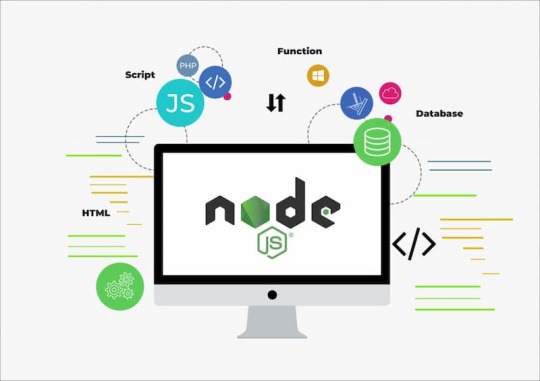
很多同学都想知道,怎么才能掌握 Node.js?
对于新人来说,其实只要掌握两个知识点,就能上手了:一个是 CommonJS 模块格式,另一个就是命令行环�� (command line,简写为 CLI)。其余部分就是普通的 JavaScript 语法。
上面两个知识点之中,CommonJS 比较简单,命令行有点难,因为内容多,需要了解操作系统,以及 Node.js 提供的各种系统接口,最常用的就是文件系统接口。

这一周介绍的课程,就是 《教你使用 Node.js 开发一个 CLI 工具》,教大家快速入门命令行开发。
这是一门视频课,手把手带你从零开始写一个 JS 脚本,把它做成命令行工具,并发布到 NPM 上面,可以给其它人下载使用。

它不同于那些直接讲述技术点的课程,不是生硬的文档解读,而是从具体的问题出发,带出知识点,立足于教会学习者,解决现实场景中的实际问题,属于“实务导向”。
课程的主讲老师崔效瑞,有丰富的前端开发经验,是 Vue 3 的代码贡献者,也是 Element3 技术负责人、mini-vue 作者。

微信扫描上方二维码报名,就可以领取这门视频课,并了解课程的详细情况。课程推广期间,不收取任何费用,保证没有套路。
科技动态
1、二氧化碳捕捉工厂


世界目前最大的二氧化碳捕捉工厂,最近在冰岛建成了。它通过风扇吸入空气,过滤出二氧化碳,然后再将二氧化碳液化,注入地下1,000米深处的矿洞存储。

二氧化碳的过度排放,是气候变暖的主要原因,目前没有好的方法吸收二氧化碳。该工厂每年只能吸收4000吨二氧化碳,只相当于800多辆汽车的排放量,而全世界2015年的二氧化碳排放量是360亿吨。(@emac 投稿)
2、搞笑诺贝尔奖

哈佛大学每年评选(似乎)无意义的研究,颁给搞笑诺贝尔奖。今年,日本学者(上图)获得了其中的动力学奖,他通过马路实验(下图)得到结论:
“如果两波人相向而行,其中有人边走边看手机,将引发人群的冲撞。”

这已经是日本学者连续15年获得搞笑诺贝尔奖了。日本网民也在议论,日本的学者是不是太多了,找不到有意义的研究题目了?

3、违规跑鞋

9月12日的维也纳马拉松赛上,埃塞俄比亚选手以2小时09分22秒的成绩获得冠军,但是随后就被取消成绩,理由是他的跑鞋违反了最新规定。
按照规定,跑鞋的鞋底厚度不能超过40毫米,但是该选手的鞋底厚达50毫米,多出整整一厘米。更厚的鞋底可以提供更好的弹力,帮助选手节省体力。

4、游戏��的衰落

日本的电子游戏厅曾经盛极一时,各种街机玲琅满目,但是,现在已经盛况不再。根据警方的统计,1986年日本全国曾经有 26,573 家游戏厅,到了2019年只剩下 4,022 家,疫情爆发以后,数目更是继续锐减,可能不到最高峰时的十分之一。

互联网和手机游戏的兴起,是游戏厅衰落的主要原因。目前,游戏厅的最大顾客来源是传统游戏爱好者,以及老年人。一位65岁的老人说,他把游乐厅当作社交场所,可以结交很多朋友。

一些人认为,游戏厅最终会消失。另一些人则认为,游戏厅值得保留下来,街机有其独特的乐趣。南梦宫、Square Enix、世嘉等街机公司,呼吁日本政府采取措施,促进街机行业的发展。
5、漂浮式光伏电站

山东德州最近建成了,世界最大的单体水上漂浮式光伏电站。在水库的水面上,漂浮着面积2200亩的太阳能光伏板,设计总容量为320兆瓦,第一期建成了200兆瓦。
漂浮式光伏电站的好处是,对水体没有破坏性,比较环保,节省地基成本,施工周期短,还可以减少水库的水量蒸发、遮挡阳光抑制藻类生长。另一方面,光伏板放在水里,可以有效降温,显著提高发电效率。
6、果蝇独居的后果

科学家已经知道,果蝇是一种社会化动物,所以常常用它做实验,研究人类社会。
《自然》杂志最近报道,科学家将果蝇单独隔离,与群居的果蝇进行对比。结果发现,独居的果蝇有更少的睡眠、更多的进食。
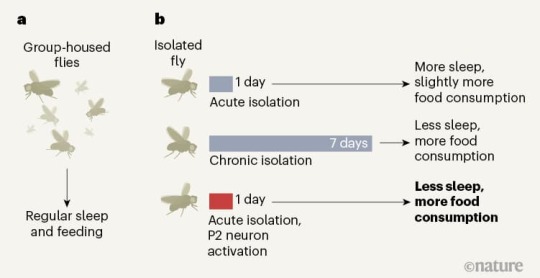
这个实验如果可以引申到人类,就表示长期独居对健康不利,群居、与他人的日常互动对健康更有利。
文章
1、WebOS 死亡十周年纪念(中文)

多年前,Palm 公司曾经发布过一个手机系统 WebOS,有很多令人难忘的特性,非常易用。2011年8月11日,该系统被宣布放弃。本文回顾了这个系统。
2、消灭后视镜(中文)

越来越多的小汽车使用摄像头取代后视镜,有的甚至连突出的门把手都隐藏了,本文讨论这样做的原因。
3、如何免费搭建一个 VS Code 网页版(中文)

VS Code 编辑器有网页版,本文教你怎么把它部署在免费服务器上,可以用来写笔记,或者偶尔远程编辑代码。(@DoctorLai 投稿)
4、你所不知道的 ASML(英文)

全世界最先进的芯片工厂,都依赖一家公司生产的 EUV(极紫外光��)芯片制造机,这家公司就是荷兰的 ASML(阿斯麦)公司。它一年生产50台 EUV,每台售价1.5亿美元起。
5、12 张视觉错觉图片(英文)

本文收集了 12 张著名的视觉错误图片。比如,上面这两张图片,看上去是不同角度拍摄的同一条街道,但是实际上,它们是同一张图片并排放在一起。
6、绝对值的计算并不简单(英文)

绝对值的算法似乎是一个微不足道的问题:判断一个数是否为负数,如果是的,就去掉它的负号。如果你采用这样的算法,那你就错了。
7、React usePrevious 钩子(英文)
本文介绍如何使用 useEffect 和 useRef 的官方钩子,写一个自己的 usePrevious 钩子,返回组件上一次渲染时的 props 参数。
8、浏览器的“包导入地图”(英文)
Chrome 89 开始支持 ES 模块的“包导入地图”功能(package import maps),可以为导入模块指定别名。
工具
1、Ventoy

一个 U 盘的启动盘制作工具,直接把系统镜像文件复制到 U 盘即可。它支持电脑启动时,从多个系统镜像文件里面选择一个启动。
2、WebDen

专供手机浏览器使用的网页代码编辑环境,提供 HTML、CSS、JS 的开发和调试。
3、View Source
一个 Web 小工具,输入网址,就可以高亮显示该网址的源码,非常好用。
4、fishdraw

一个 JS 脚本,可以自动生成鱼的图形。这里还有一个可以自动画树的库。
5、MDvideo

一个桌面软件,自动将 Markdown 文档转成一段视频。文档里面的视频、音频、图片网址,都会抓取后插入视频,还可以根据文字生成人工语音的旁白朗读。
它非常适合快速生成产品的介绍视频。(@linqian02 投稿)
6、group-by-repo-on-github

油猴脚本,用来处理 GitHub 的网页搜索结果,可以根据仓库分类,并自动获取分页结果,即不用点击“下一页”了。(@foamzou 投稿)
7、iDraw.js
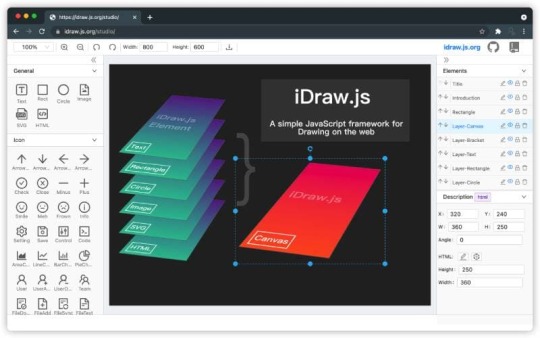
一个简单的 JS 库,用来使用脚本进行网页绘图。它基于 Canvas,可以绘制文字、矩形、圆形、图片、HTML 片段和 SVG 文件。(@chenshenhai 投稿)
8、PikaScript

这个项目用来为单片机提供 Python 支持,让你可以通过 Python 脚本操作单片机。(@pikasTech 投稿)
9、mini-stores
小程序状态管理库,方便管理页面状态,支持各公司的小程序。(@linjc 投稿)
10、Neumorphism

一个网页工具,用来生成照明阴影效果的 Flutter 代码。这里还有 CSS 版。(@xrr2016 投稿)
资源
1、Samantha Ming 个人网站
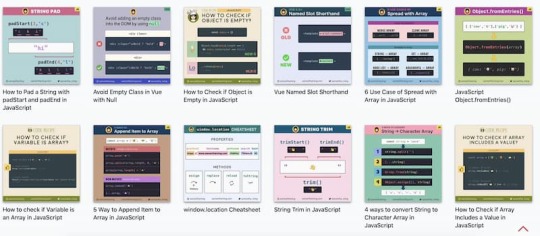
Samantha Ming 是一名加拿大前端工程师,她在个人网站上分享了很多前端代码的技巧,内容质量很高,制作精美。(@wxyudl 投稿)
2、糖尿病教育网站

加州大学旧金山分校主办的网站,全部使用中文,提供糖尿病、健康、运动、饮食知识,内容很不错。(@Stupid-Human 投稿)
3、程序员的数学导论

一本英文的数学教��,专门写给没有数学基础的程序员,主要介绍微积分和线性代数,并且结合编程实例(比如加密和神经网络)进行讲解。全书可以0元购买。
4、 SQL Bolt

一个交互式的英文在线教程,一共19课,从零开始讲授 SQL 知识,以及如何查询数据库。
5、国际数据管理手册

该网站提供全世界各国的各种数据格式,比如地址、电话、邮政编码、货币、车牌等的格式。
图片
1、手机学习网页开发
一个尼泊尔老师在网上贴出照片,他的学生没有笔记本电脑,只能通过手机架设开发环境,学习网页开发。

经过两个月,这个学生已经初步掌握 HTML、CSS 和 JS。
2、世界上最长的钢琴
钢琴的音质与琴弦的长度有关。琴弦越长,振动越慢,就能发出越低频的声音,所以高级的三角钢琴,体积都很大,长度都不短于2.3米。
一个新西兰青年阿德里安不禁突发奇想,如果制造一个特别长的钢琴,不就可以发出非常低的音频吗?
他决定自己来造一个,从图书馆找到资料,在钢琴师傅的指导下,开始动手建造。



最后,他造出了世界上最长的钢琴,长度接近10米。
他说,本想造得更长,但是他家的车库放不下了。




果然,这架钢琴的音质相当好,吸引了很多专业音乐家专程来演奏,还灌制了唱片。



文摘
1、乔布斯的白板事件
摘自沃尔特·艾萨克森的《乔布斯传》。

1985年,30岁的乔布斯被赶出了苹果公司。
他随即创立了 NeXT 公司,继续开发符合他理想的下一代个人电脑。

1986年,一家叫做 Pixar 的图形硬件公司找到了乔布斯。那家公司濒临破产,急需资金。乔布斯经过思考,同意给钱,成为这家公司的最大投资者。
最初,这只是一笔单纯的风险投资。但是后来几年,Pixar 还是不断亏损,乔布斯不得不追加投资,最后索性成了公司的董事长,直接介入公司管理。
那时,乔布斯每周有一两天去 Pixar 公司办公,剩下的时间就去 NeXT 公司办公。

进入九十年代以后,NeXT 公司和 Pixar 公司的业务都不见起色,看上去两家公司都会失败。这是乔布斯一生中的最低潮,他的压力很大。
有一天,Pixar 公司开会,乔布斯对 Pixar 创始人史密斯和其他高管破口大骂。因为他们一直拖延,没有按时拿出下一代图像电脑的电路设计。
那个时候,NeXT 的新产品也没有按时完成。史密斯就反唇相讥:“嘿,你的 NeXT 电路板做完了吗?不要光盯着我们。”
乔布斯听了勃然大怒。史密斯后来回忆:“他气到失去理智。” 史密斯说话有西南部口音,乔布斯就学他的口音,冷嘲热讽。史密斯说:“他欺人太甚,太过分了。我也气炸了,什么话都骂出口。于是我们几乎贴着对方的面,大约只隔一个巴掌宽,互相对骂。”
乔布斯开会时,一定要把白板据为己有,不轻易让别人使用。史密斯利用自己的大块头,一把推开他,迳自走到白板前,边写边解释。乔布斯吼道:“你给我住手!”
“咦?”史密斯回击:“白板是你的吗?我不能写吗?简直是胡扯。”乔布斯气得当场离席。
这场会议以后不久,史密斯就辞职离开了 Pixar,自己创业开了一件软件公司,专攻电脑绘图和影像编辑。
他很幸运,微软后来买下了他的公司。他可能是历史上唯一一位,创立了两家公司,一家卖给了乔布斯,另一家卖给了比尔·盖茨。
言论
1、
如果你走得足够远,其实就再也没办法回去了。当你回到故乡,原来的一切都已经消失了。
不过,这也不算什么,归根结底,旅程才是你的故事中最重要的部分。
-- 《如果有无尽的推动力,宇宙飞船可以飞多远?》
2、
二战开始后,德国轰炸伦敦。伦敦市区每天晚上都有炸弹落下,郊区的炸弹比较少,可能每周一次。
战后的调查发现,在这段时期,市区居民的胃溃疡发病率显著增加,奇怪的是,郊区居民的胃溃疡发病率,增加得比市区还要大得多。这说明压力的不确定性比压力本身伤害更大。
--《学会减少不确定性》
3、
Dropbox 这个软件给人的感觉是,很早就达到了顶峰,然后随着开发团队尝试添加越来越多的功能,而逐渐变得糟糕。
-- Hacker News 读者
4、
赚到一百万美元以后,再往前走的动力都来自你的热情。
-- Joel Spolsky
5、
幸福的秘诀就是永远抱有低期望值。(the secret to happiness is low expectations.)
-- Hacker News 读者
历史上的本周
2020年(第 125 期):数字人民币要取代谁
2019年(第 73 期):数据统计的威力
2018年(第 22 期):猴子自拍,版权归谁
订阅
这个周刊每周五发布,同步更新在阮一峰的网络日志和微信公众号。
微信搜索“阮一峰的网络日志”或者扫描二维码,即可订阅。

(完)
0 notes
Text
Nuxt.js+TypeScriptで抽選ツールを作ってみた

はじめまして、2021年度新卒の木村です。 フロントエンドエンジニアとして テクノロジーセンター5G に所属しています。
今回は、Nuxt.js ならびに TypeScript を利用して、簡単な抽選ツールを作成してみた内容についてご紹介します。
Nuxt.js と TypeScript
Nuxt.js は、Vue.js ベースの JavaScript のフレームワークです。Webページ構築に有用な UI 以外の機能( Ajax やサーバーサイドレンダリングなど)をまとめて利用できる環境を提供してくれます。 Nuxt.js 公式サイト
TypeScript は、省略可能な静的型付けとクラスベースオブジェクト指向を加えた JavaScript のスーパーセット(上位互換)です。一言で言うと「型定義できる JavaScript 」。 TypeScript 公式サイト
なぜ抽選ツールを作ったのか
主な理由は、以下の2点です。
私の所属するチームで扱っている Nuxt.js および Typescript の概要を掴むため
チーム内でMTGのファシリテータが偏ってしまう課題を解決するため
完成物
さっそくですが、完成した物がこちら。

ランダムにユーザーを抽選できるシンプルなツールです。 デザインは近年流行ったニューモーフィズムを取り入れてみました。 少ない配色でも凹凸によって奥行きができるので、シンプルなツールでも見栄えが良くなります。
使った技術
Nuxt.js 2.15.7
TypeScript 4.2.4
Vue.js 2.6.14
Vuex 3.6.2
firebase 8.7.1
tailwindcss 2.2.4
sass 1.35.1
環境
M1 Mac
VSCode
yarn
機能
今回の抽選ツールの機能は以下とおりです。
ユーザーを登録・削除する
ユーザー情報をDBで保持する
登録したユーザーからランダムに抽選する
完了した人・休みの人にチェックし、抽選対象から外す
抽選終了後、選ばれた人は自動で完了チェックされる
全員チェックしたら一括リセットできる
作成手順
全体的な流れは以下のとおりです。
環境構築
各機能作成
Vuex導入
firebase導入
1. 環境構築
create-nuxt-appを利用して環境を構築しました。
create-nuxt-app
公式サイトとNuxt.js 入門の記事 を参考にしました。
2. 各機能作成
前述した各種機能を実装していきます。
欠席者の対応
完了した人だけでなく、休みの人など抽選対象から除外したい場合を想��して、完了チェックとは別に除外したいユーザーを指定できるようフラグを持たせています。
コンポーネントについて
個人的に苦労したのはコンポーネント周りです。
まず、どのくらいの単位で区切れば良いのかがわかリませんでした。 そこで今回は Atomic Design を参考に切り出しました。
また、他の箇所でも使えるように汎用的に作ることです。 クリックなどのイベントは全て親へ渡し、スタイルや表示の変更は親から値を渡すようにすることで、atoms単位のコンポーネントがどこでも使えるよう心がけました。
例えばボタンコンポーネントは、予めいくつかのスタイルを定義しておき、親コンポーネントで使うときに下記のように props で必要なスタイルを渡すとともに、$emit でクリックイベントを親に渡しています。
//Button.vue <div> <button :class="[ colorStyle[buttonColor], sizeStyle[buttonSize], fontStyle[buttonFont], ]" @click="$emit('button-click')" > <slot></slot> </button> </div>
//Input.vue <Button button-color="gray" button-size="short" button-font="small"> ADD </Button>
そしてコンポーネント間のデータの受け渡しです。 例えばユーザー情報は、子から emit で親コンポーネントに値を引き渡し、さらに別の子コンポーネントに props で渡して表示しています。

今回はシンプルなツールなのでコンポーネントも少ないですが、こうした受け渡しが重なってくるとコードが煩雑になりメンテナンスがしづらくなります。そこで、Vuex を導入し状態管理をすることにしました。
3. Vuex 導入
Vuex のストアでユーザー情報の状態を管理します。 今回はDBも使う予定なので、actions でDBに接続した後、値を state に反映させています。

Nuxt.js は store ディレクトリにファイルを作成するだけでストアを有効化してくれるので便利ですね。今回は管理するのがユーザー情報だけなので、index.ts を作らず users.ts を直下に作りました。
Vuex ストアでデータを一元管理できるので、本当にわかりやすくなりました。コンポーネントを超えて共有される情報を管理するには、とても強力なツールだと思います。
一方で、Vuex を使用する際には、注意点もあります。 例えば、小さいレベルのコンポーネントからは Vuex を使用しない方が良いでしょう。 コンポーネントの使い回しが難しくなるのと、1画面の中で複数の箇所から Vuex のストアへの参照と変更が入り組んだ場合、処理が追いにくくなるためです。
参考:Vuexはなるべく避ける Vuexで何をするか、何をしないか
Vuex を利用する際は、Atom や Molecule レベルのコンポーネントの中では使わない、state を直接参照しない、などのルールを設けて運用したいと思います。
4. firebase 導入
DBとデプロイは firebase を利用します。 firebase は以前にも使ったことがありましたが、やはり firestore を使えば面倒な手間をかけずにDBが実装できますね。万歳。 デプロイも firebase の Hosting を使って行いました。
さらに、今回は社内向けツールなので、デプロイにあたり外部からのアクセスを制限するため、 Authentication を使用してログイン認証を追加します。管理者アカウントとしてユーザーを一人だけ登録し、簡単なPWを打てば誰でも使えるようにしました。 ログインしていない状態では認証後のページへ飛べないようにするため、強制的にindexへリダイレクトするmiddlewareも追加しています。
const auth = firebase.auth() const middleware: Middleware = ({ route, redirect }) => { auth.onAuthStateChanged((user) => { if (!user && route.name !== 'index') redirect('/') }) }
また、Authentication の認証状態は、デフォルトではユーザーがブラウザを閉じた後でも永続的に維持されるようになっています。 今回は管理者アカウント一つだけの使用になるため、ログアウトせずにウィンドウを閉じてしまうと、他の人がアクセスした時でも前のセッションが続くことになります。 そこで、 firebase.auth().setPersistence メソッドで永続性タイプを SESSION に変更することで、ウィンドウやタブを閉じるたびにログイン状態がクリアされるようにしました。
ちなみに、Nuxt.js には nuxt/firebase というモジュールがあります。firebase をより簡単に利用できるので、興味があればご覧ください。
詰まったところ
sass の導入
sass の導入で沼りました。どうやら node のバージョン16 かつ M1チップ だと node-sass が動かないようです(2021/09 執筆時点)。node のバージョンを下げることで解決しました。
型定義
Vuex での型定義、props での型定義、firebase で扱う日時の型定義… 型推論が効かず、気づけばanyになっている型に苦しめられました。 特に Vuex は、ストアへアクセスするための便利な型がなく、今回使用した this.$store は Nuxt.js で型指定されていません。 自前の型を使うか、nuxt-typed-vuex を利用することで改善するしかないようです。
また、 TypeScript と Vuex の相性は良くなく、コンポーネントから store を呼び出したときに型安全が守られない、インテリセンスが効かないといった問題があります。 次に TypeScript で Vuex を扱う際は、Nuxt.js 公式で推奨されている vuex-module-decorators を使用したいと思います。
振り返り
さて、ここまで長々と書いてきましたが、今回のアウトプットを通して Nuxt.js と TypeScript の概要は大体掴めたかな、という感じです。 結論、Nuxt.js 便利!
日本語ドキュメントが充実していてほぼ誰でも簡単に始めることができる
ルーティングを自分で作成する必要がない
SSRなどモードを選べるて柔軟なサイト設計ができる
…など、Nuxt.js を使うことで直感的にDOMの内容を操作でき、より簡単に抽選ツールを作ることができました。
また、TypeScript についても、型定義のおかげで、コンポーネント間のデータの受け渡しでもどういう型か判断でき、コードが見やすくなります。 さらに、力補完のおかげでコードを書く時間を短縮できる、エラーチェックを機械に任せることができる、など多くのメリットがありました。 一方で、Vuexとの連携は公式で推奨されているパッケージを使うなど、改善の余地があります。
最後に
以上、Nuxt.js を利用して抽選ツールを作成してみた内容の紹介でした。
最後まで読んでいただき、ありがとうございました。 どなたかの参考になれば幸いです。
0 notes
Video
youtube
دوره ی آموزش پروژه محور vue.js بصورت کامل در لینک زیر هست . 🌍 https://avasam.ir/product/27 . در این ویدیو درباره ی دوره ی آموزش پروژه محور ویو جی اس سایت آواسام صحبت میشود و جزئیات کامل این دوره گفته میشود. . آموزش ویو جی اس دانلود فیلم آموزش vue js آموزش پروژه محور لاراول و ویو فریم ورک ویو آموزش vue js Vue js آموزش pdf آموزش vue js Props در ویو جی اس آموزش vue.js رایگان آموزش ویو جی اس رایگان آموزش پروژه محور لاراول و ویو آموزش vue js 3 دوره کامل vue js - #آموزش_vue.js #آموزش_ویو #vuejs
0 notes
Text
Significant React Native Libraries for Mobile App Development in 2021

React Native happens to be one of the most sought-after app development frameworks across the globe as it comes with a host of advantages like a cost-effective developmental cycle, faster time-to-market, high performance, modular and intuitive architecture, and many more.
One of the unique benefits of this framework is the availability of countless third-party libraries that expedite the development and prove highly convenient for every React Native App Development Company. However, owing to the presence of thousands of React Native libraries, selecting the apt ones becomes a herculean task. As a consequence, development teams often have to spare a great deal of time and effort for picking the right tool or library that would prove fruitful.
For easing out this task, I have penned down the most significant tools and libraries that complement the React Native framework. A quick read will help you to find the perfect match that suits your requirement.
Tools and Libraries for Various React Native App Development Categories
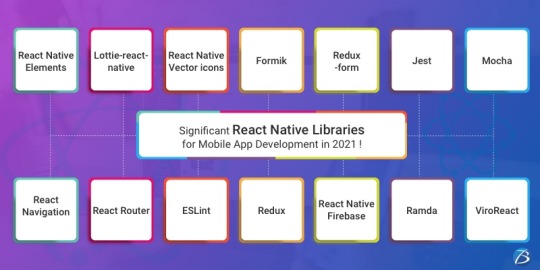
Category: User Interface
React Native Elements
This UI library, built using JavaScript, has earned 20.5k stars and 4.2k forks on GitHub.
This library comes with cross-platform compatibility and supports Expo.
It is easy to use, customizable, and community-driven.
Lottie-react-native
This library created by Airbnb enables adding attractive animations to React Native applications.
React Native developers can either select from the free animations available or design and add their animations employing “Adobe After Effects.”
Functioning: The animation data is exported in JSON format with Bodymovin and rendered natively on mobile.
Styled Components
This library enables developers to write CSS code for styling components
It removes the mapping between styles and components, thereby easing out the usage of components as a low-level styling construct.
The styles can be reused several times resulting in lesser coding
React Native Vector icons
React Native Vector icons is a library that offers numerous icons of various types, designed for the React Native Apps.
Each element can be fully customized
Category: Forms
Formik
It’s a small library that helps to build forms in React
Formik enables to validate the form values, display error messages and helps to submit the form.
Redux-form
Redux-form enables proper state management in Redux
It helps in tracking the commonest form states like fields contained in the form, focussed field, field values, fields which the users have interacted with, etc.
Category: Testing
Jest
This is a popular testing framework, designed and maintained by Facebook, and is used for testing JavaScript code. This versatile testing tool is compatible with any JavaScript framework or library, including React, Angular, VueJS, etc. Uber, Airbnb, and Intuit are some of the top brands that have leveraged this tool. Its offerings are:
High-speed performance
Standard syntax with report guide
Mocks functions, with the inclusion of third-party node_module libraries
Conducts parallelization, snapshot, and async method tests
Enables managing tests with bigger objects, by using live snapshots
Mocha
Mocha is a JavaScript test framework, used for testing React and React Native apps. It provides the Developers full control over what plugins and tools they choose to use while testing applications. Its major highlights are:
Runs on Node.js
Provides support for asynchronous front-end and backend testing, test coverage reports, and the usage of any claims library
Helps to track errors
Excels in mocking tests
Enzyme
Enzyme is another testing tool developed by Airbnb.
It comes with API wrappers, to ease out developers’ tasks like manipulating, asserting, and traversing the React DOM.
It supports full and shallow DOM and also supports static rendering
Besides, it is compatible with several other testing frameworks and libraries like Mocha and Jest.
Chai
It’s an assertion testing library meant for browser and node
Chai employs behavior-driven and test-driven development principles
Compatible with various testing tools and can be paired with any JS testing framework
Its functionality can be extended by using several custom plugins
Moreover, it enables the developers to create their plugins and share them in the community
Category: Navigation
React Navigation
This component supports navigational patterns like tabs, stacks, and drawers
It is based on JavaScript and is simple to use
It enables developers to effortlessly set up app screens
Can be completely customized as well as extended
React Router
This is a library of navigational components which composes declaratively with the app.
It allows one to specify named components, create various types of layouts, and pass layout components.
Category: App’s State Management
Redux
Redux, a free-standing library, and a predictable state container is predominantly used along with the UI library components of React. Besides the React ecosystem, one can also use Redux with other frameworks like Vue, Angular, Vanilla JS, Ember, etc. Its principal offerings are:
Can be used with back-end as well as front-end libraries
Enables the developers to write consistent codes
Allows editing the live code
Functions well in various environments – Server-side, client-side, and native
Connects the pieces of state to the React components by minimizing the need for props or callbacks.
Category: Linting and checking Types
ESLint
It’s a JavaScript-based, open-source linter tool
ESLint is configurable and pluggable
It improves the code consistency and makes it bug-free
It helps in evaluating patterns in the code and eliminates errors by automatically fixing the code, to enhance the overall code quality.
It helps detect creases in the JavaScript code that don’t comply with the standard guidelines
It helps react native developers to create their own linting rules
Flow
Developed by Facebook, Flow is a static type checker JavaScript library
It easily identifies problems during coding
It proves beneficial in crafting large applications, as it prevents bad rebases when several persons are working on a single program.
The main objective of Flow is to make the code more precise and enhance the speed of the coding process
Category: Networking
Networking tools are used to establish a networking flow in React Native projects. Let us have a look at a few of them.
react-native –firebase is a lightweight layer on the top of Firebase libraries. It creates a JavaScript bridge connecting to the native JavaScript SDKs to ease out using Firebase in React Native Application Development projects.
Apollo Client is quite compatible and adaptable. It is required when the developers need to use GraphQL. It assists in creating a User Interface that pulls data with GraphQL.
Axios, a lightweight HTTP JavaScript client was built to send asynchronous HTTP requests to REST endpoints. Besides, it performs CRUD operations.
react-native-ble-manager is a plugin that helps in connecting and transmitting data between a mobile handset and BLE peripherals.
Category: Utils
The below-mentioned ready-made tools simplify and speed up working with Utils while developing React Native apps.
Ramda is a library that eases out creating functional pipelines without user-data mutation.
The JavaScript functions’ toolkit Lodash offers clean and effective methodologies to your development team for working with collections and objects.
Reselect builds memorized selectors that are needed for avoiding unnecessary recalculation and redrawing of data. This library also quickens the speed of your app.
Moment works with various data formats and is capable of parsing, manipulating as well as validating times and dates in JavaScript.
Validate.js, designed by Wrap, offers the app developers a declarative way to validate JS objects
Category: Analytics
The following libraries act as mediators enabling one to implement the trending analytical tools into their React Native Mobile App Development projects.
react-native-mixpanel is a kind of wrapper for the library named Mixpanel and helps the developers to reap all the benefits of the Mixpanel library.
react-native-google-analytics-bridge acts as a bridge for establishing compatibility between Google Analytics tools and React Native projects.
Category: Localization
react-native-i18n helps in localizing or internationalizing applications. It integrates the i18n-js library in JavaScript for React Native applications.
Category: In-app Purchases
react-native-in-app-utils is a small library used to implement the in-app billing procedure for iOS apps. It can be effortlessly installed and is simple to work with.
react-native-billing is used for adding in-app billing to applications meant for the Android platform. It possesses a simple UI and wraps anjlab’s InApp Billing library to function as a bridge.
Category: AR and VR
ViroReact is used to speedily develop native cross-platform VR/AR apps in React Native. Its key functionalities are:
It has an easy learning curve
It comes with a high-performing native 3D rendering engine as well as a custom extension of React for creating VR and AR solutions.
It provides support for all kinds of platforms in VR including Samsung Gear VR, Google Cardboard, Google Daydream, etc. for Android and iOS; and AR including Android ARCore and iOS ARKit platforms.
Needs React-Viro-CLI and React-Native-CLI for writing cross-platform native codes
Final Verdict:
I hope the aforesaid information was helpful and has given you a clear idea of which library/libraries would be most suitable for your next project.
To know more about our other core technologies, refer to links below:
Angular App Development Company
Ionic App Development Company
Blockchain app developers
0 notes
Text
Simplify Static Asset Management With Vue.js Single-File Component

Static asset management is one of the more painful and mysterious challenges front-end developers face. We want our source code to be simple to develop and maintain, but we rely on browsers to be lean and mean. Browsers can’t be expected to understand our fancy source files with conveniences like Sass or the newest bleeding edge JavaScript features. We configure transpilers, linters, and compressors that watch for source code changes or get triggered by build processes. And finally, these tools emit static assets that a browser can interpret

Even when we don’t use fancy preprocessors, we still copy the source files to a dist directory to deploy them…because…well…it’s just what we do!

On top of this complexity, we have traditionally maintained a separation of concerns between markup, scripting, and styling. This separation can lead to extreme bloat that makes our applications difficult to maintain.
Imagine a request to remove a component from a view. You remove the markup…but can you track down CSS selectors that are specific to this component? All the media queries? Do you feel safe removing code that may affect other parts of the view? What about a request to modify a component’s appearance? Do you add a new class to your updated component and leave the old styling behind, just in case there are other parts of the view that are styled by it? Technical debt accumulates. Eventually, you have a pile of dead code mixed in with the good stuff. It’s very difficult to clean up, and nobody wants to pay for the effort.

Not to imply that your code is inherently bad. It’s a consequence of the separation of concerns that has made the internet look sharp since the W3C adopted CSS in 1996.
So, what are our alternatives? Inline CSS? An occasional inline style attribute is acceptable in the 21st century. But even with CSS-in-JS libraries, this solution can be challenging to scale. We need the cascade. We need media queries.
Many modern frameworks combine JavaScript with markup; it’s the core of the React, Angular, and Vue.js revolution. The concept of “styled components” is also trending. But unification usually comes at a cost. The learning curve, awkward code structure, and dependency on 3rd party libraries may outweigh the advantages. However, Vue’s out-of-the-box support for the concept makes it simple to grasp and implement.

The Vue.js framework Single-File Component (SFC) allows you to combine templating, scripting, and styling in a single source file that can accept props and manage state. Vue CLI — the “beginner” installation of Vue.js — will pre-configure the bridge between your .vue source files and webpack that requires absolutely no configuration or webpack knowledge. Let’s open a terminal and quickly build a working example using npm.
1.Install Vue CLI: npm install -g @vue/cli
2.Create a new project (accept the default settings): vue create vue-sfc-example
3.Start the project: npm run serve
4. Render HelloWorld.vue in a browser: http://localhost:8080

SO easy. Let’s open the source to see what we built.
<template>
<div class="hello">
...some markup...
</div>
</template>
<script>
export default {
name: 'HelloWorld',
props: {
msg: String
}
}
</script>
<!-- Add "scoped" attribute to limit CSS to this component only -->
<style scoped>
h3 {
margin: 40px 0 0;
}
ul {
list-style-type: none;
padding: 0;
}
li {
display: inline-block;
margin: 0 10px;
}
a {
color: #42b983;
}
</style>
The <template> tag wraps Vue template syntax enhanced markup.
The <script> tag wraps JavaScript.
The <style> tag wraps CSS.
Aside from placing the styling at the end of the file, this source file looks an awful lot like an html file that a browser could interpret. There is a lot going on under the hood, but Vue doesn’t clutter the source with tooling bloat.
Let’s concentrate on the <style> tag. The boilerplate contains some basic CSS, and an attribute named “scoped”. As the code comment implies, this attribute allows you to “scope” this block to only apply to this particular component, by automatically namespacing the CSS. Compare this to a more traditional approach, which might involve creating a selector like: “#hello-world-component-namespace.this-component {...}” in some faraway css file. The scoped attribute is optional. If you want to modify child components, one approach is to exclude the scoped attribute. You may also use multiple blocks of CSS, in case you wish to scope part of the code, but style children with a separate CSS block.
<style scoped>
h3 {
margin: 40px 0 0;
}
...
</style>
<style>
#child-component > h3 {
margin: 10px;
}
...
</style>
If you inspect the source code in your browser, you can see this style block rendered in the head of the document:
<style type="text/css">h3[data-v-469af010] {
margin: 40px 0 0;
}
ul[data-v-469af010] {
list-style-type: none;
padding: 0;
}
li[data-v-469af010] {
display: inline-block;
margin: 0 10px;
}
a[data-v-469af010] {
color: #42b983;
}
</style>
There is no need to version or deploy a CSS file, in this example. The data attribute in the first block is no accident. It uniquely identifies the component this styling is scoped to.
<div data-v-469af010="" class="hello">...</div>
Predictably, namespacing is suppressed for code blocks that are not scoped.
<style type="text/css">
#child-component > h3 {
margin: 10px;
}
</style>
An alternative to this approach is the ::v-deep combinator, which allows you to style children from a scoped block. Details can be found here.
But what about my Sass? Good news: SFCs tap into all of your favorite webpack preprocessors. Install sass-loader with npm:
<style scoped lang="scss">
h3 {
margin: 40px 0 0;
}
ul {
list-style-type: none;
padding: 0;
> li {
display: inline-block;
margin: 0 10px;
a {
color: #42b983;
&.very-green {
#00ff00;
}
}
}
}
</style>
But what about my Sass globals, includes, mixins, etc.? Never fear — the Sass block you include in your SFCs works just like your typical Sass source file. You can pass includes, set variables, nest media queries, and any other Sass convenience.
<style scoped lang="scss">
@import "mixins";
@import "global/global";
#main {
padding-top: em(54);
@media (min-width: $screen-md) {
padding-top: 0;
}
}
</style>
The vue-loader, which is included and pre-configured by Vue CLI, makes all of this work. Sass/Scss, Less, Babel, TypeScript, and other popular preprocessors and linters are supported. These features can be discretely configured, to the delight of advanced users.
The Vue.js SFC offers the convenience our source code deserves, without the file management and webpack tooling headaches. You can also use the component state to set class and style inside your templates, using built-in lifecycle hooks. It is also important to note that you can still include CSS the typical way, or in a mixed mode. This is especially handy when using rapid prototyping libraries like Bootstrap.
What’s the catch? Vue.js is a relatively new player. It’s picking up steam, but there aren’t as many applications using the framework as the competing products — Angular and React. That means the user community is comparably small. Examples are slim and basic. You are cutting your own trail. Also, we have detected some “spookiness” in the way preprocessors react to code structure. The preprocessors may need some configuration and babysitting, once you scale into a larger project.
_________________________________________
0 notes